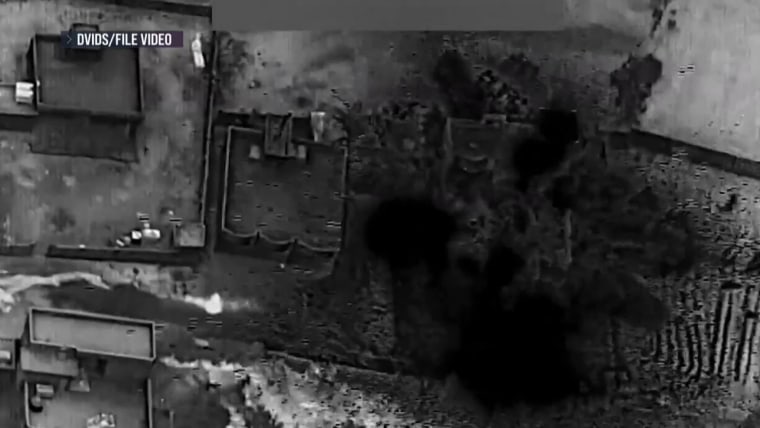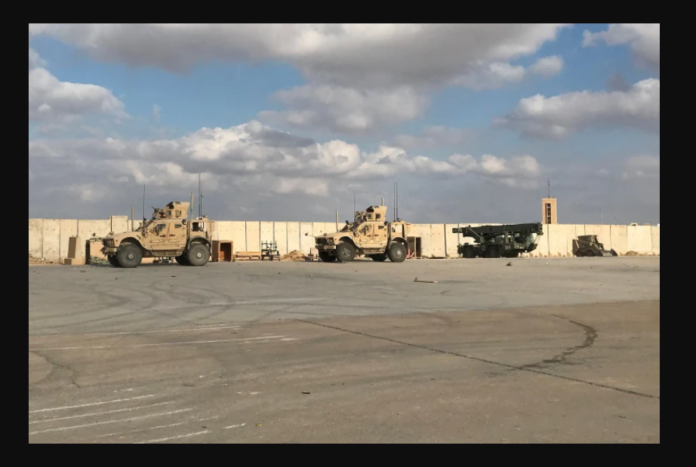Since October 17, at least 23 attacks have targeted American objectives in Syria and Iraq, a senior U.S. military official said on Monday.
SOURCE : NBC NEWS
According to the source, the main weapons used in the strikes have been drones and rockets; of these, 14 have been launched at American sites in Iraq, and nine against American outposts in Syria. No injuries to Americans were reported by the official.

Since the United States began retaliatory strikes on two locations in Syria with ties to Iran on Thursday, at least four assaults have occurred.
According to a senior military officer, the United States utilized precise bombs dropped by two F-16s to attack two locations: a weapons storage facility and an ammo storage area. No victims were found, the senior military officer said.
The U.S. assaults last Thursday were described as “separate and distinct from the ongoing conflict between Israel and Hamas” by Defense Secretary Lloyd Austin, who also said that they do not signify a change in the U.S. strategy towards the conflict.
Defense authorities said that U.S. and coalition soldiers had been targeted in Iraq and Syria at least nineteen times before retaliation. U.S. Central Command said that on October 18, at least two one-way attack drones attacked the al-Tanf military facility in southern Syria. Two distinct drone strikes on American and coalition soldiers based at al-Asad base in western Iraq occurred on the same day. While seeking refuge, one American civilian contractor passed away from a heart attack, and twenty-one US troops were injured, nine of whom had severe brain injuries. Since then, everyone who was hurt has gone back to work.
A military official said on Friday that there had been another assault in Iraq, stating that American troops had shot down a one-way drone “a few kilometers” away from the Asad facility.
Attacks are defined by the US as attempted strikes against US infrastructure. Not every effort succeeds in attaining the American goals.
The Pentagon press secretary, Brig. Gen. Pat Ryder, said last Tuesday that Iran and its Islamic Revolutionary Guard Corps are supporting the terrorists carrying out the assaults.
He said, “We always retain the right to self-defense, and we will never hesitate to act when necessary to safeguard our soldiers and our interests abroad.
There have been many assaults on US interests in Syria and Iraq since October 17, which has led to worries about the region’s tensions rising. According to a senior U.S. military source, drones and rockets have been the main weapons of choice in at least 23 strikes that have taken place during this time. Nine of these strikes were aimed against US outposts in Syria, while 14 of them were intended at US locations in Iraq. Thankfully, no American personnel injuries have been recorded.
The United States’ decision to carry out retaliatory strikes on two facilities in Syria that have connections to Iran is what caused the most recent round of assaults. The accurate bombs dropped by two F-16s were used to carry out the attacks, which included hitting a weapons and ammunition storage complex. No injuries were recorded, even though these facilities were destroyed.
The current war between Israel and Hamas should not be confused with the retaliatory attacks carried out by the United States, as Defense Secretary Lloyd Austin stressed. Furthermore, he emphasized that these attacks do not represent a shift in American policy toward the larger Middle East conflict.
U.S. and coalition troops had already been subjected to many assaults in Syria and Iraq before the retaliatory strikes. There were two distinct drone attacks on October 18. Two drone attacks were launched against coalition and American troops stationed at the al-Asad camp in western Iraq, while the al-Tanf military site in southern Syria was the target of one of the strikes. One American civilian contractor died from a heart attack as a consequence of these strikes, and twenty-one U.S. personnel were wounded, nine of whom had serious brain damage. Thankfully, every wounded employee has subsequently resumed their duties.
Furthermore, a few kilometers from the al-Asad site, American forces were able to destroy another one-way drone in Iraq at a later time. These occurrences highlight how the danger environment that American soldiers are facing in the area is changing.
It is imperative to make clear that these assaults are considered attempts to harm American infrastructure by the United States. Not every effort has been able to accomplish its objectives.
Brig. Gen. Pat Ryder, the press secretary for the Pentagon, said that the organizations behind these assaults had received backing from Iran and its Islamic Revolutionary Guard Corps. He said, “We always retain the right to self-defense, and we will never hesitate to act when necessary to safeguard our soldiers and our interests abroad.”
The intricacy of the security dynamics in the area is brought to light by the current wave of strikes against American targets in Syria and Iraq. The US is dedicated to safeguarding its troops and interests in the region, and it is keeping a careful eye on the situation. The whole community will be keeping an eye on any developments and diplomatic attempts to defuse the situation as long as tensions are present.





